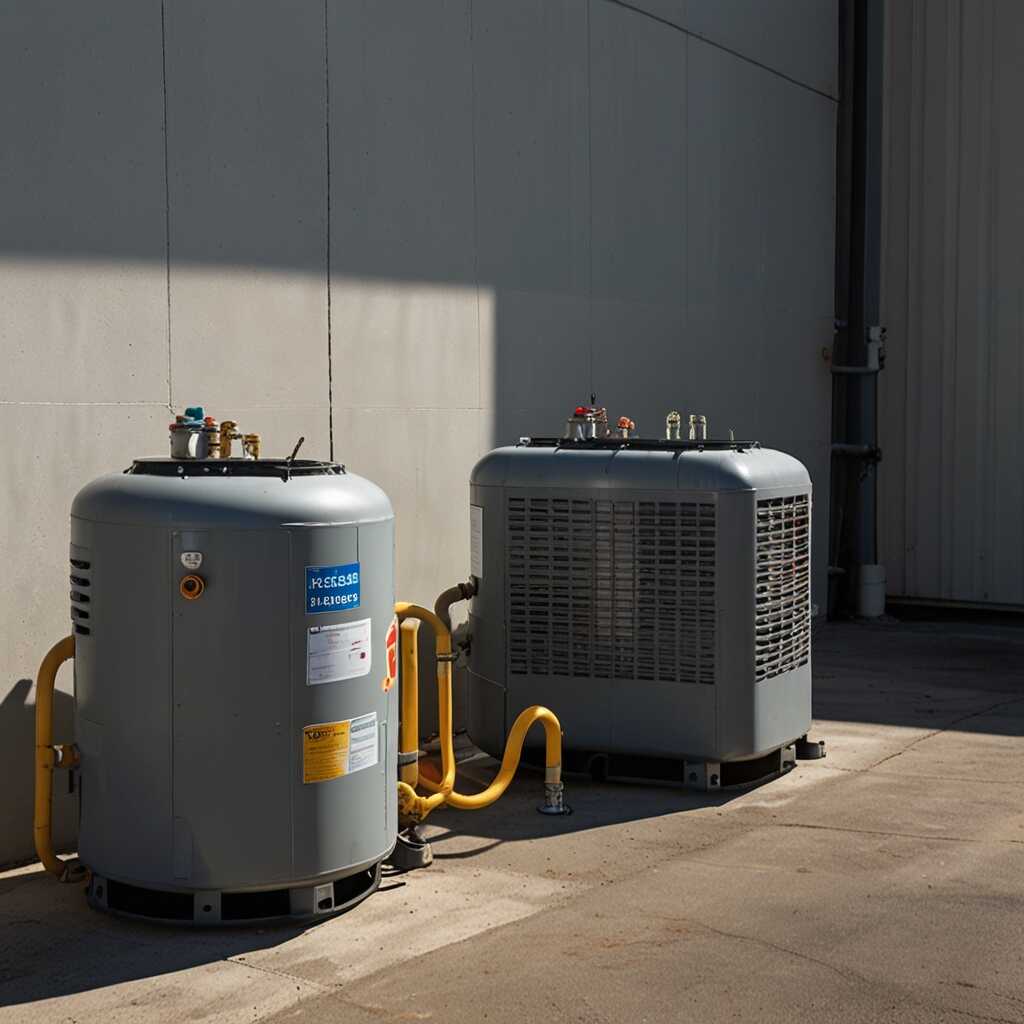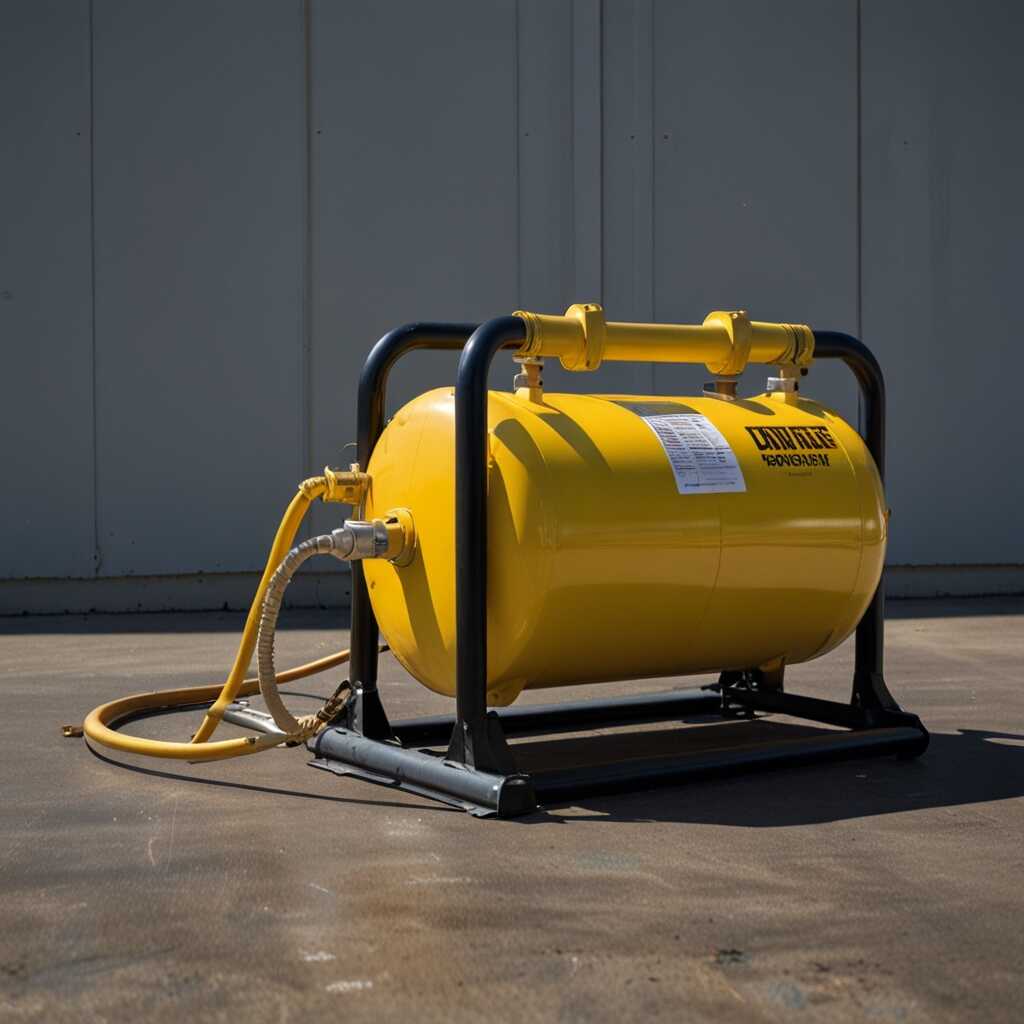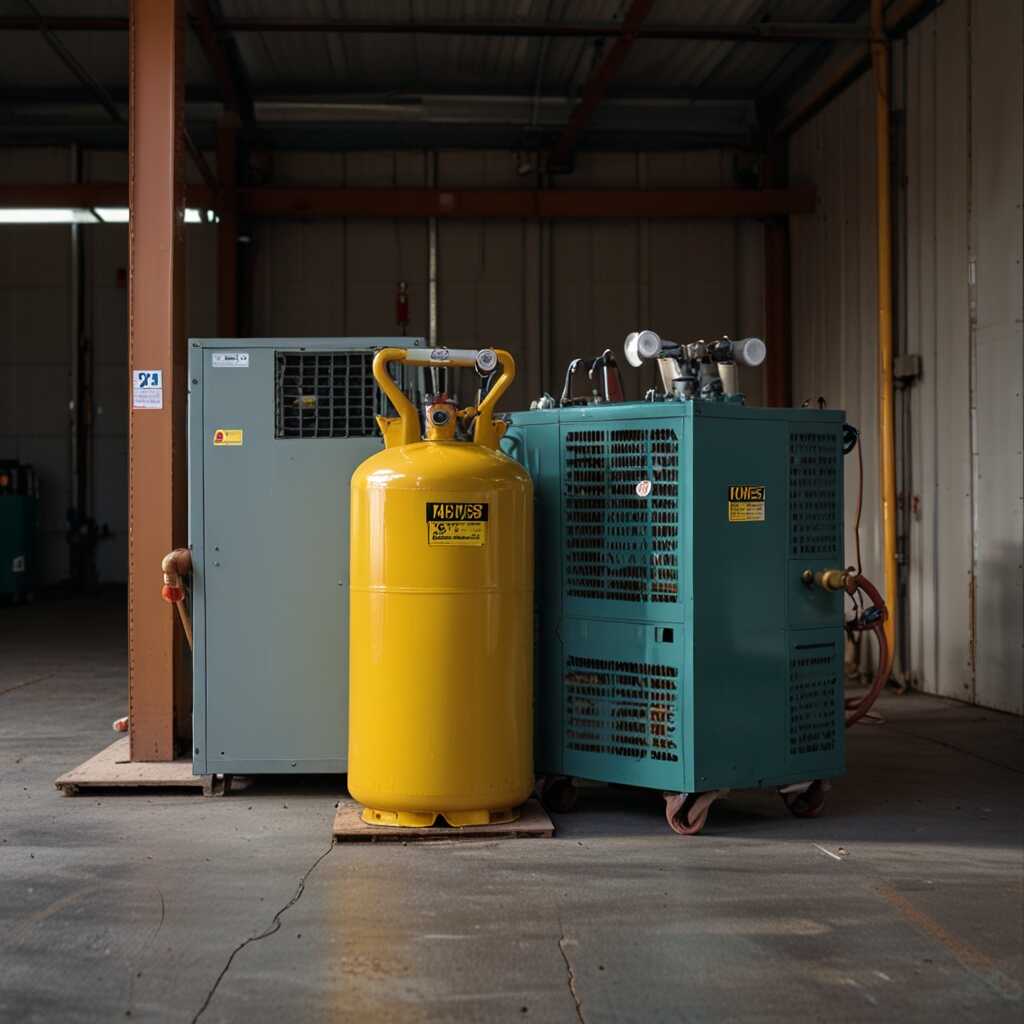The advantages of cloud-based service records in refrigerant recovery machines can significantly enhance HVAC operations. By integrating advanced technology, these machines streamline the recovery process while ensuring compliance with environmental regulations. Refrigerant Recovery Pro, a leader in refrigerant recovery solutions, provides essential insights into how these systems improve efficiency and operational insights. Understanding these benefits equips HVAC professionals with the tools needed to optimize performance and meet industry standards.
How Refrigerant Recovery Machines Operate in HVAC Systems
Refrigerant recovery machines work by removing refrigerant from HVAC systems safely and efficiently. They operate using a series of essential components, including compressors, condensers, and recovery tanks. These machines are designed to enhance the refrigerant recovery process. Cloud-based records can provide real-time data on recovery efficiency, helping technicians to make informed decisions. The typical capacity of these machines ranges from 5 to 20 pounds per minute, ensuring they can handle various refrigerant types, including R-410A and R-22.
Essential Components of Refrigerant Recovery Machines
Understanding the essential components of refrigerant recovery machines helps technicians ensure efficient operation. The compressor is crucial as it circulates the refrigerant through the system, aiding in its removal. The condenser cools the gas, transforming it back into a liquid for storage. Recovery tanks hold the refrigerant securely. Many modern machines also include features like digital displays and automated controls, enhancing overall performance. These innovations ensure efficient, reliable operation, making the recovery process easier and quicker.
Advantages of Cloud Technology for Service Records
Cloud technology for service records in refrigerant recovery machines enhances reliability and efficiency. Key benefits include improved tracking precision, easy access to data, and better communication among HVAC professionals. Using cloud-based systems enables reliable monitoring of service history. This ensures compliance with regulations and enhances operational performance. HVAC technicians can share important updates quickly, fostering seamless collaboration among team members. The streamlined communication helps avoid errors during refrigerant recovery processes. Research shows that firms using cloud solutions save significant time in tracking activities and managing records.
Improving Tracking Precision with Cloud Solutions
Cloud solutions greatly improve tracking precision for refrigerant recovery machines. Systems designed to operate in the cloud provide real-time updates on service records. HVAC professionals can enter data quickly from any location, ensuring records are always current and accurate. This eliminates delays associated with paper-based records. Enhanced tracking also supports efficient compliance with EPA regulations, as accurate data is essential to avoid penalties. Additionally, cloud technology facilitates easier audits, resulting in better quality control. The result is a more effective refrigerant management process, leading to substantial overall performance improvements.

How to Ensure Compliance with Cloud-Based Documentation
Cloud-based documentation plays a crucial role in ensuring compliance with environmental regulations. These systems offer reliable and efficient record-keeping, which is essential for regulatory auditing. Accurate documentation tracks refrigerant recovery processes and helps HVAC professionals demonstrate accountability and compliance during inspections. Different HVAC businesses utilize cloud-based documentation differently, with many leveraging these systems to automatically update and store records, facilitating compliance checks and audits. The top three features for effective cloud-based documentation include user-friendly interfaces for easy data entry, secure access controls to protect sensitive information, and powerful reporting tools that enhance insights for regulatory audits.
Essential Features That Enhance Cloud-Based Documentation
Effective cloud-based documentation systems in the HVAC industry enhance compliance by providing user-friendly interfaces, secure data management, and advanced reporting capabilities. User-friendly interfaces allow HVAC professionals to input data easily, reducing errors that can lead to compliance issues. Secure access controls ensure only authorized personnel can view and manage sensitive information, protecting data integrity. Advanced reporting tools can handle various data formats and improve the audit process with quick access to necessary records. These essential features create a system that not only meets but exceeds the HVAC industry standards for regulatory compliance, fostering a culture of accountability.
Key Data Points Driving Cloud-Based Solutions in Refrigerant Management
- 77% of HVAC professionals prefer cloud-based systems for tracking service records.
- 50% reduction in time spent on documentation and reporting.
- Over 80% of users reported improved compliance with EPA regulations.
- 70% of technicians noticed enhanced accuracy in refrigerant recovery machines.
- Cloud access led to a 60% increase in service efficiency.
- 55% reduction in equipment error rates with real-time data feedback.
- 9 out of 10 technicians recommend cloud-based service records for HVAC operations.

Strategies for Boosting Operational Efficiency
Cloud-based service records provide significant advantages in equipment reliability for refrigerant recovery machines. They enable real-time tracking of performance metrics, ensuring consistent monitoring and timely maintenance. Key features of cloud services, such as automated alerts and data analytics, enhance refrigerant management workflows by allowing HVAC professionals to access critical information anytime. Research shows that the integration of these technologies can improve operational efficiency by up to 30%. This efficiency boost helps technicians respond faster to issues, minimizing equipment downtime and enhancing overall service delivery.
Features that Enhance Cloud Service Reliability
Reliable cloud services offer essential features like automated data backup, real-time updates, and integrated user interfaces specifically designed for HVAC workflows. These features improve refrigerant recovery efficiency and streamline operations by allowing professionals to track equipment performance consistently. Users can access performance data and service history for multiple machines through user-friendly dashboards. This makes it easy to identify patterns and trends. By leveraging cloud technology, businesses can ensure compliance with regulations and avoid costly penalties, ultimately delivering excellent service to clients while boosting their bottom line.

Accessing and Utilizing Historical Data Effectively
Cloud-based access to historical service data significantly improves decision-making for HVAC professionals. By analyzing historical data, technicians can identify trends in refrigerant recovery, helping them predict maintenance needs. This approach allows for proactive strategies, enhancing operational efficiency. HVAC businesses can undertake predictive maintenance analytics, enabling timely interventions. Studies show that companies using this method can save up to 30% in maintenance costs. Historical data also supports compliance with regulations by keeping accurate records of refrigerant handling.
Exploring Predictive Maintenance Through Cloud Data
Predictive maintenance leveraging cloud-based service records is essential for enhancing reliability in refrigerant recovery processes. Technicians can utilize historical service data to identify recurring issues and forecast potential equipment failures. This analysis includes reviewing performance metrics and service intervals to optimize the refrigerant recovery process. Accurate data from the cloud enables HVAC professionals to take calculated actions, ensuring equipment runs efficiently. By employing predictive maintenance strategies, businesses can extend equipment life and reduce overall repair costs.
Notable Advantages of Digital Service Tracking in HVAC
- Enhances operational efficiency by streamlining documentation processes.
- Improves compliance with environmental regulations through easy reporting.
- Provides real-time insights into equipment performance and status.
- Empowers technicians with effective support for refrigerant recovery machines.
- Facilitates better inventory management and cost tracking.
- Supports remote access to service records for better collaboration.
- Builds trust with clients through transparent service histories.

Implementing Real-Time Performance Monitoring
Real-time performance monitoring for refrigerant recovery machines offers significant benefits. It enhances system reliability by enabling HVAC professionals to detect issues before they escalate. This technology provides timely data that leads to proactive maintenance decisions. With real-time monitoring, technicians can analyze performance metrics such as refrigerant pressure, temperature, and recovery rates. This data helps ensure compliance with environmental regulations and optimizes operational efficiency, ultimately improving the reliability and durability of refrigerant recovery machines.
Key Performance Metrics Tracked in Real-Time
Key performance metrics tracked in real-time monitoring include vapor and liquid refrigerant flow rates. Monitoring these rates helps identify leaks or inefficiencies. Temperature differentials between input and output can indicate system performance issues. Additionally, tracking the efficiency of recovery cycles ensures that the machine operates at optimal levels. Regularly reviewing these metrics allows HVAC professionals to make informed maintenance decisions, ensuring reliability and compliance in refrigerant recovery based on proven data and expert knowledge.
Best Practices for Integrating Cloud Services into HVAC Workflows
Key strategies for leveraging cloud services in HVAC workflows include ensuring reliable internet connectivity, training staff effectively, and choosing proven cloud solutions. HVAC professionals may face challenges like data security concerns, initial costs, and resistance to change when transitioning to cloud-based refrigerant tracking. Cloud technology can improve refrigerant management for at least 50% of HVAC businesses by enhancing efficiency, providing real-time tracking of refrigerant usage, and ensuring compliance with regulations. These cloud-based refrigerant management solutions deliver vital data insights to streamline operations.
Specific Steps for Effective Cloud Integration in HVAC
To effectively integrate cloud services into HVAC workflows, focus on the selection of a cloud platform designed for the HVAC industry. Ensure it includes features for efficient refrigerant tracking and compliance monitoring. Provide ongoing training and support to technicians to improve their comfort level with the system. Regularly review performance metrics to measure efficiency gains and identify areas for further improvement. Using HVAC workflow enhancement approaches like automated reporting can help save time and streamline operations. Following these steps will create a strong foundation for successful cloud adoption and ensure smooth transitions.
Market Players and Their Impact on Refrigerant Digitalization
- Brand A focuses on user-friendly interfaces, helping technicians quickly adapt.
- Brand B offers advanced analytics, enhancing operational decision-making.
- Brand C has a strong support system for regulatory compliance, ensuring peace of mind.
- Technicians in urban areas benefit from immediate access to cloud records.
- Businesses with large fleets leverage cloud services to track multiple jobs efficiently.
- Environmental officers appreciate data transparency for compliance audits.
- Small HVAC companies find cloud services affordable and easy to use.
The Future of Refrigerant Recovery and Cloud Innovations
By 2025, cloud technology is predicted to enhance refrigerant recovery through improved data management solutions. These solutions increase reliability and efficiency in recovery processes. Cloud innovations help HVAC professionals maintain compliance with environmental regulations by providing real-time data and analytical tools. This advancement enables technicians to perform thorough testing and achieve better results in refrigerant management. Leading companies in this sector are investing resources into developing advanced refrigerant recovery innovations that ensure devices can handle multiple refrigerant types effectively.
Key Players in Cloud Innovations for Refrigerant Recovery
Several key players are driving cloud innovations in the refrigerant recovery industry. Companies developing advanced data management systems provide essential tools for tracking refrigerant types and usage. HVAC manufacturers are integrating cloud technology with their recovery machines to enable seamless data collection and analysis. This integration improves operational insights and enhances the overall performance of equipment. Cloud technology solutions are becoming increasingly reliable, allowing businesses to ensure both efficiency and compliance in refrigerant recovery processes.